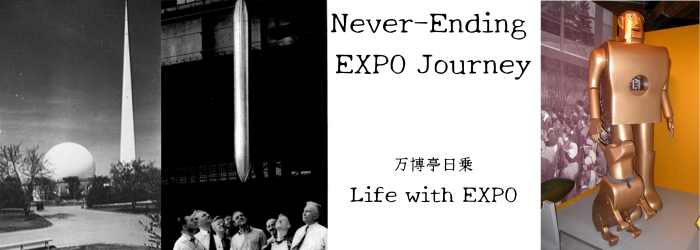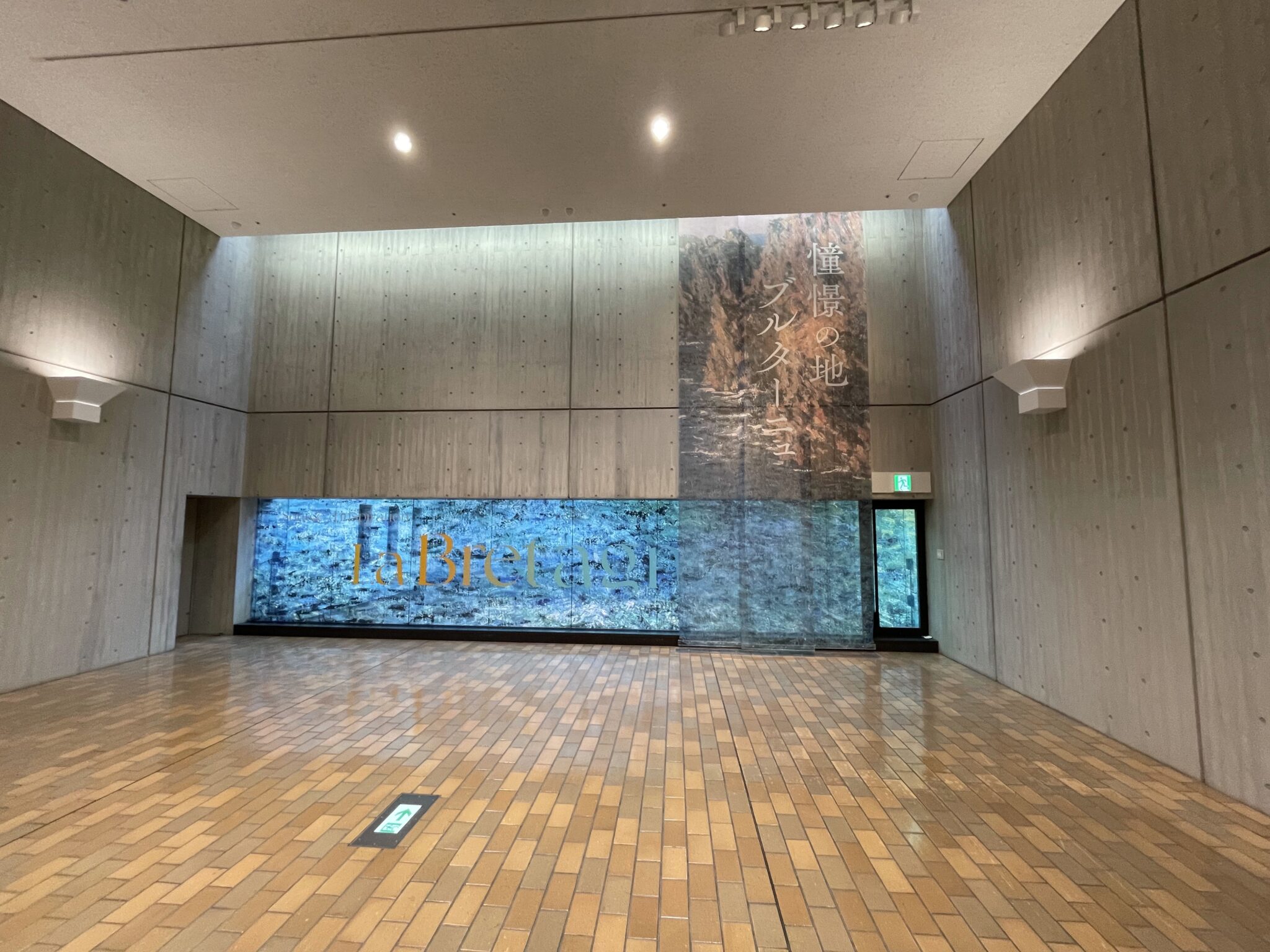Curious about ‘Seibi(The National Museum of Western Art)’s LA BRETAGNE Exhibition
On the day I saw the Neil exhibition at the Tokyo National Museum, it was still raining, but I was curious about the “La Bretagne Exhibition (The Brittany Exhibition)” held at the National Museum of Western Art on my way to Ueno Station.
I was already pretty tired, but I decided to give it another try.
regards de peintres français et japonaisOrganized by:
The National Museum of Western Art, TBS, The Yomiuri Shimbun
Supported by:
Embassy of France / Institut français du Japon, TBS RADIO,INC.
With the sponsorship of:
Daiwa House Industry Co., Ltd., Dai Nippon Printing Co., Ltd.(DNP),
Sompo Japan Insurance Inc.
With the cooperation of:
Nippon Express Co., Ltd., The Western Art Foundation
Dates: March 18th – June 11th, 2023
Brittany is a region in northwestern France. In the town of Pont-Aven in Brittany, the painting movement that would later be called the ‘Pont-Aven School‘ was developed by artists such as Paul Gauguin (1848-1903) and Emile Bernard. And there is also an episode that the painters of the “Pont-Aven School” participated in the third Paris World Exposition held in 1889, which is famous for the Eiffel Tower, in an unofficial form.
So, there may be things related to the Expo on display, I expected.
1889 Paris Exposition and Gauguin
With that kind of interest, I decided to take this opportunity to visit ‘Seibi(The National Museum of Western Art)’, even though I put a little strain on my body.
I had’nt even made a reservation, but luckily the ticket line was less than 10 meters long. It took me about just 5 minutes and I was able to get a ticket for the right time slot.
Discovered “Commonly known as ‘Volpini’s Suite'”!
As expected, there were a lot of interesting works on display.
The works of Alphonsia Mucha, Eugène Boudin, Odilon Redon, Claude Monet, Paul Gauguin, Emile Bernard, Paul Sérusier, Maurice Denis, and other famous painters we know well are on display. . In other words, all these painters had some kind of connection with Brittany, such as working in the Brittany region.

クロード・モネ『嵐のベリール』
1886年 油彩 オルセー美術館
Claude Monet “Storm, Coast of Belle-île”
1886 Oil on Canvas Musée Palis

ポール・ゴーガン『海辺に立つブルターニュの少女たち』
1889年 油彩 国立西洋美術館(松方コレクション)
Paul Gauguin “Two Breton Girls by the Sea”
1889 Oil on canvas The National Museum of Western Art, Tokyo (Matsukata Collection)

ポール・セリュジエ『ブルターニュのアンヌ女公への礼賛』
1922年 油彩/カンヴァス ヤマザキマザック美術館
Paul Sérusier ”Homage to Anne of Brittany
1922 Oil on canvas The Yamazaki Mazak Museum of Art, Nagoya
It was a wonderful exhibition with many masterpieces on display, but the ones that caught my eyes the most were Paul Gauguin‘s two small black and white lithographs, which most people would pass by. Compared to other oil paintings, these are rather plain works, but above all, the title is;
(1889, Lithograph <zincograph>, Yokohama Museum of Art)
and another one
(1889, Lithograph <zincograph>, Aichi Prefectural Museum of Art)
I found out the connection with World Exposition!
If you hear the word “Volpini” and get a feel for it, you must be familiar with the World Exposition.
Yes, when we hear the name of Volpini, we would think of the 1889 Paris Exposition and the painters of the Pont-Aven School of Gauguin and others.
In fact, at the Paris Exposition of 1889, Gauguin, along with seven other painters who would later be called the Pont-Aven School, including Émile Bernard, whose works were not exhibited at the official art exhibition venue of the Expo, participated in the unofficial exhibition using the wall of “Café Volpini“, which was in Champ de Mars Expo site.
This exhibition was called “Exhibition of Impressionist and Synthetist Group“.
The so-called “Volpini Suite” must be, no matter how you look at it, related to the exhibition that Gauguin held at “Café Volpini” at the 1889 Paris World Exposition.
I am deeply moved to think that such works were exhibited at the Café Volpini at the Paris World Exposition in 1889, more than 130 years ago. (just me?)
Moreover, I didn’t know that both lithographs were owned by Japanese museums. It was another happy discovery.
Since there is no detailed explanation in the side caption of the work in the exhibition hall, I am not sure if these are really related to Café Volpini at the 1889 Paris World Exposition. So I bought a catalog to see if there was more information. This catalog is also quite a masterpiece.
An explanation of these two works was written in the work description at the latter half of the catalog. From the initials at the end of the sentence, we can tell that it is a commentary by Mr. Hiroyo Hakamata, Curator, at the National Museum of Western Art.
Quoted below.
*
On the occasion of the 1889 Paris World Exposition, Schuffnecker and Bernard presided over the ‘Impressionism and Synthesis Group’ exhibition at a cafe near the venue. In addition to exhibiting 17 paintings, Gauguin also prepared a series of 11 prints in a format that could be viewed by visitors upon request. The common name of the series is named after the owner of the café, Volpini. Early in the same year, Gauguin wrote in a letter to Van Gogh that he had created these paintings “to make himself known.” (Omitted below)
*
As expected!
However, according to this commentary, these prints were not “displayed” in the cafe, but were prepared “in a format that customers could view upon request”. I don’t know exactly how it happened (I wonder if it was put in a file or something), but it must be a “fact” that these works were introduced at the Café Volpini at the 1889 Paris World Exposition. There is no doubt about that
By the way, Gauguin asked Van Gogh (1853-1890) if he would like to exhibit his works in this exhibition of “Cafe Volpini”. At this time, Van Gogh‘s younger brother Theo seems to have refused. I haven’t fully investigated the reason yet, but it may be because Van Gogh wasn’t evaluated well at the time, or because he had a different idea from the Pont-Aven School.
By the way, Van Gogh’s works were not exhibited at the official art exhibition venue of this Paris Exposition either.
The connection between Van Gogh and World Expo
I’m not sure when Van Gogh’s work was first exhibited at the World Exposition. After some research, I found out that it was not exhibited at the Paris Exposition in 1900, having various problems.
However, at least there is a record that his works were exhibited at the 1937 Paris World Exposition. By that time, Van Gogh had already passed away, but it seems that the evaluation of Van Gogh’s works by the art world had already solidified.
While I was reading Simone de Beauvoir‘s “The Prime of Life“,of Penguin Book, I happened to find the proof in the book.
*
“The Exposition [Paris Universal Exposition of 1937] opened its doors for us.
We spent hours in front of masterpieces of French art, especially in the few rooms devoted to Van Gogh‘s work.
It was the first time we’d seen his works put together, from his early dark, youthful sketches to the irises and the ravens of Auvers.”
*
The sentences above can be found in the book.
The fact that ” few rooms” were allocated to Van Gogh’s works suggests that Van Gogh was exhibited on a considerable scale.
(By the way, Beauvoir wrote, just after this sentence, that “the Spanish pavilion opened in mid-July, and in its brand-new pavilion, we received the first shock of by Picasso’s ‘Guernica’.”)
Well, I got lost in the labyrinth of Van Gogh and the World Exposition and got sidetracked.
This is all for today, and next time I will introduce other topics about the “Exhibition in Brittany” and the World Exposition.



